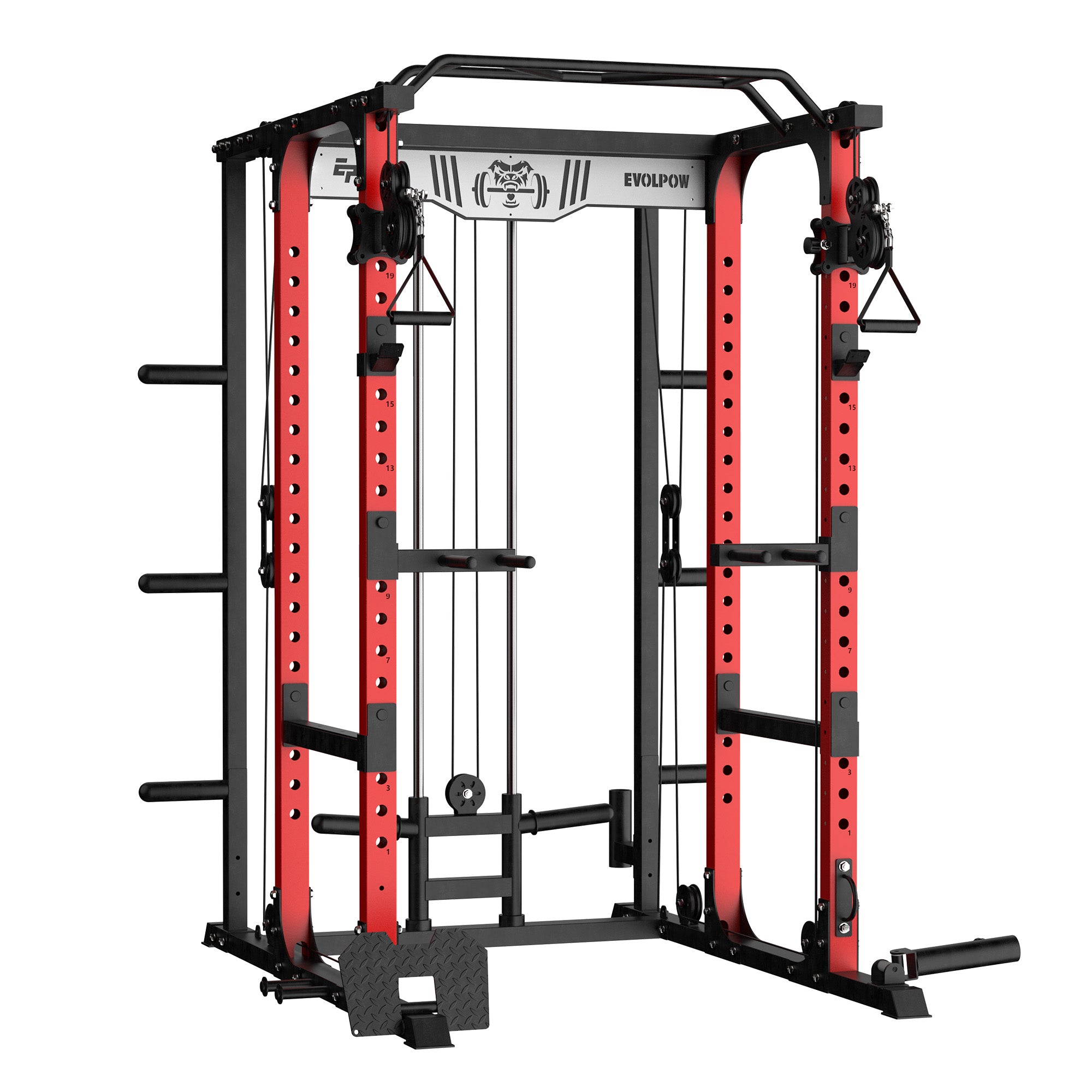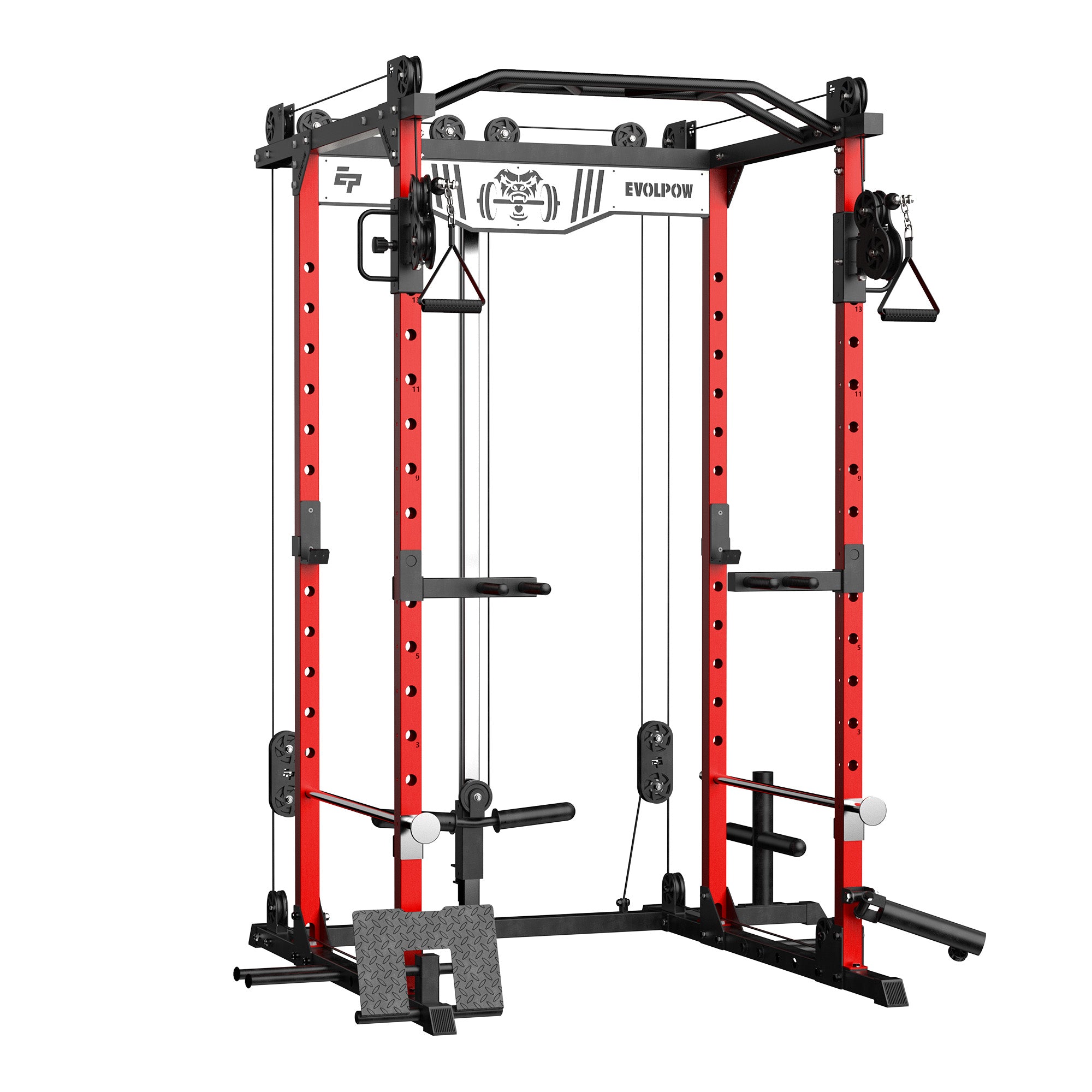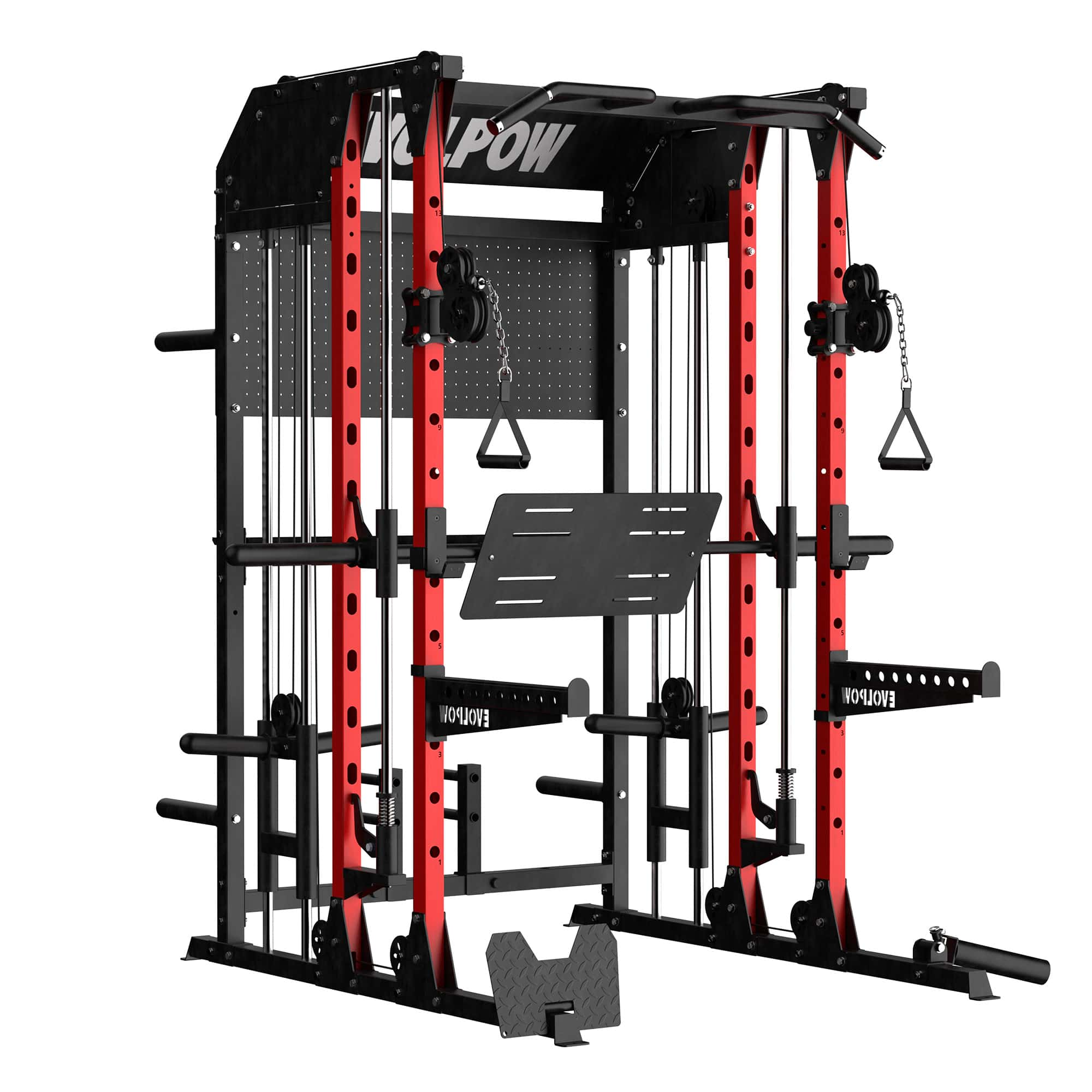When building a workout routine, the right home gym equipment can make or break your progress. While squat racks and power racks both support strength training in the home gym, their exercise capabilities differ drastically. Let’s dive into how each machine handles specific movements, safety, and versatility—so you can choose based on what you want to lift, not just where you’ll put it.
CONTENTS
Overview of Power Racks and Squat Racks
What Can You Do on a Power Rack?
What Can You Do on a Squat Rack?
How to Choose: Prioritize Your Routine
Overview of Power Racks and Squat Racks

Power Rack: A power rack, also known as a power cage, is a robust, four-post structure that forms an enclosed space for weightlifting. It is designed to provide maximum safety and versatility for a wide range of exercises. The power rack features adjustable safety bars, J-hooks, and often additional accessories like pull-up bars and dip bars. This makes it an ideal choice for those looking to perform compound movements such as squats, bench presses, deadlifts, and overhead presses.
Squat Rack: A squat rack, sometimes referred to as a squat stand, is a more compact and simplified version of the power rack. It typically consists of two vertical posts with adjustable barbell holders. While primarily designed for squats, it can also be used for bench presses and overhead presses. Squat racks are generally more affordable and space-efficient, making them a popular choice for home gyms with limited space.
What Can You Do on a Power Rack?

A power rack is a full-body strength hub. Its enclosed, four-post design and modular accessories turn it into a versatile station for nearly every compound lift and functional movement:
Core Exercises:
-
Squats & Overhead Presses: Adjustable safety bars/pins catch the barbell if you fail, letting you push heavy weights solo.
-
Bench Presses: Use the rack as a stable base for incline/flat bench work, with safety bars protecting you during max efforts.
-
Deadlifts: While you can deadlift outside the rack, the power rack’s sturdiness lets you store plates and add attachments mid-workout.
-
Pull-Ups & Chin-Ups: Built-in or add-on pull-up bars let you tackle vertical pulling movements—perfect for back and bicep days.
-
Dips & Lunges: Attach dip bars or use the rack’s frame for bodyweight exercises, the latter by resting weight plates on J-hooks for loaded lunges.
Accessories Amplify Variety:
Additions like landmine attachments, belt squat kits, or cable pulleys transform it into a functional trainer, supporting rotational movements, core work, and even rehab exercises.
What Can You Do on a Squat Rack?
A squat rack is a specialized tool for foundational lifts, designed for simplicity and space efficiency:
Core Exercises:
-
Squats: The primary focus—J-hooks hold the barbell for back squats, front squats, or overhead squats, with basic safety bars (if included) catching light-to-moderate weight fails.
-
Bench Presses: Some models let you invert J-hooks for bench pressing, but the open-front design lacks full enclosure, requiring a spotter for heavy lifts.
-
Lunges & Calf Raises: Use the rack to load a barbell for walking lunges or calf raises, though storage and safety features are minimal.
Limitations:
-
Heavy deadlifts require clearing space around the rack.
-
Overhead presses risk the barbell tilting outward due to the open design—safer only with light weights.
How to Choose: Prioritize Your Routine

-
If You Want Full-Body Versatility:
-
Power racks shine for lifters who mix barbell work (squats, bench, deadlifts) with bodyweight (pull-ups, dips) and accessory movements. Ideal for home gyms where one machine needs to replace a gym’s stations.
-
If You’re Focused on Basics:
-
Squat racks are perfect for beginners or lifters who prioritize squats, bench, and lunges—especially if you train with a spotter or don’t need pull-up and accessory capabilities.
FAQ
Q: Which device is more suitable for beginners to use?
A: The squat rack is suitable for beginners or users with a single training goal. It is easy to operate and has a lower price, and can meet the basic strength training needs such as squats and bench presses. If beginners wish to develop comprehensively, strength racks offer better safety and versatility, and are especially suitable for avoiding injuries when training alone.
Q: Which home gym should I choose with limited space?
A: Give priority to squat racks. It is small in size and suitable for small-space layouts. The basic model can even be folded. If the budget permits and multiple uses are desired, some compact strength racks can also adapt to medium and small Spaces while offering higher safety and expandability.
Q: Are the accessories of the power frame important? What are the specific uses?
A: Very important. Standard accessories such as pull-up bars support back training, and parallel bars are used for arm flexion and extension. The expansion accessories can upgrade the strength frame into a multi-functional training station, supporting complex movements such as core rotation and rehabilitation training, significantly expanding the diversity of training.
REFERENCE
https://www.yourworkoutbook.com/power-rack-vs-squat-rack/
https://torokhtiy.com/blogs/guides/power-rack-vs-squat-rack
https://musclesquad.com/blogs/fitness-equipment/squat-racks-vs-power-racks
https://homegymmag.com/squat-rack-vs-power-rack/
https://www.inspireusafoundation.org/power-rack-vs-squat-rack/






